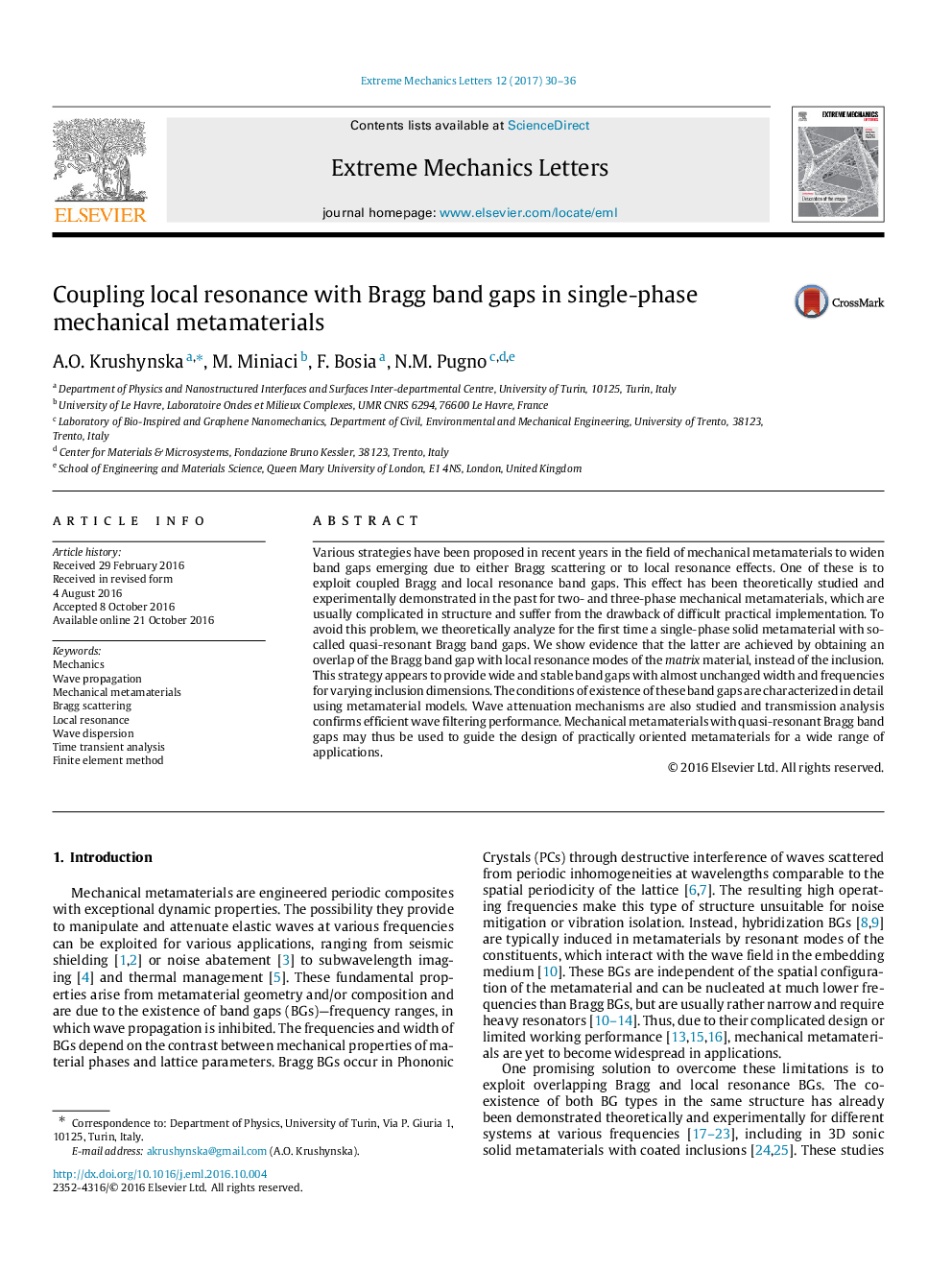| Article ID | Journal | Published Year | Pages | File Type |
|---|---|---|---|---|
| 5014455 | Extreme Mechanics Letters | 2017 | 7 Pages |
Various strategies have been proposed in recent years in the field of mechanical metamaterials to widen band gaps emerging due to either Bragg scattering or to local resonance effects. One of these is to exploit coupled Bragg and local resonance band gaps. This effect has been theoretically studied and experimentally demonstrated in the past for two- and three-phase mechanical metamaterials, which are usually complicated in structure and suffer from the drawback of difficult practical implementation. To avoid this problem, we theoretically analyze for the first time a single-phase solid metamaterial with so-called quasi-resonant Bragg band gaps. We show evidence that the latter are achieved by obtaining an overlap of the Bragg band gap with local resonance modes of the matrix material, instead of the inclusion. This strategy appears to provide wide and stable band gaps with almost unchanged width and frequencies for varying inclusion dimensions. The conditions of existence of these band gaps are characterized in detail using metamaterial models. Wave attenuation mechanisms are also studied and transmission analysis confirms efficient wave filtering performance. Mechanical metamaterials with quasi-resonant Bragg band gaps may thus be used to guide the design of practically oriented metamaterials for a wide range of applications.
